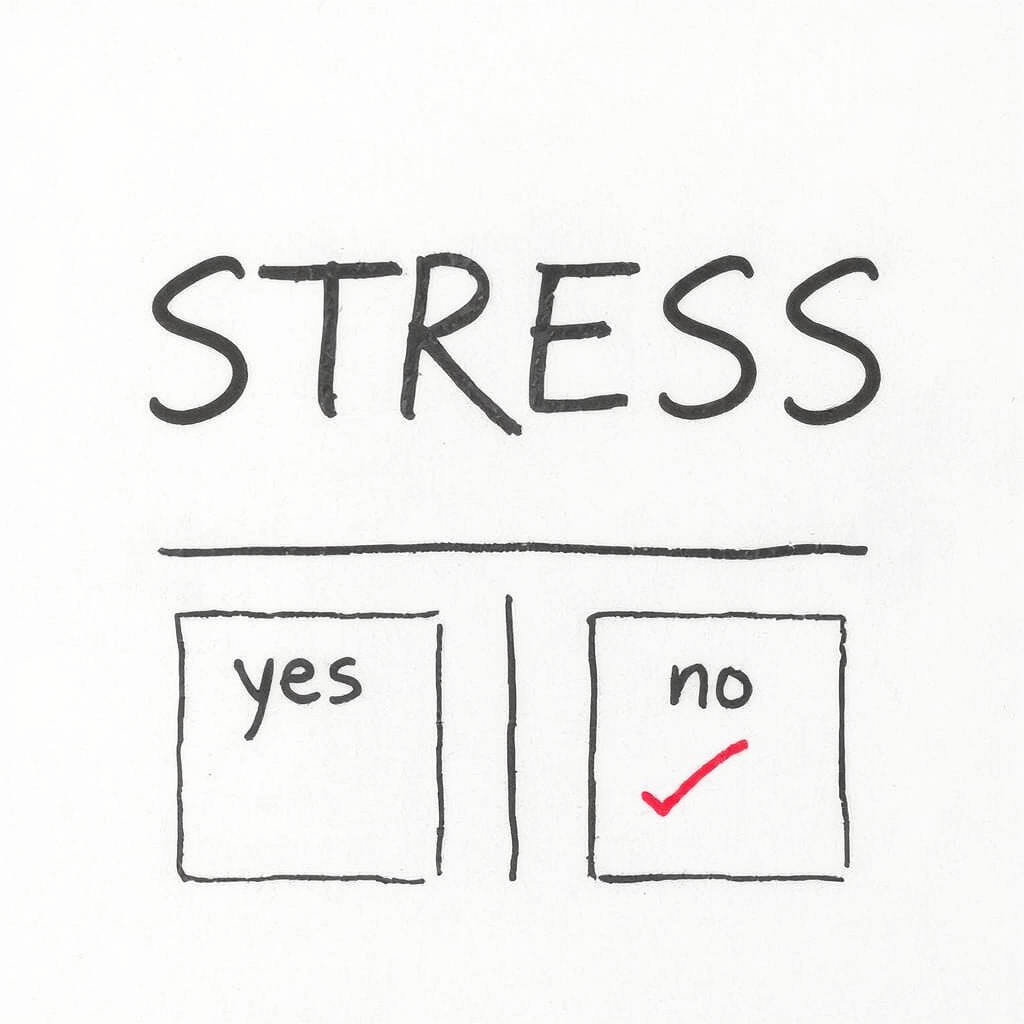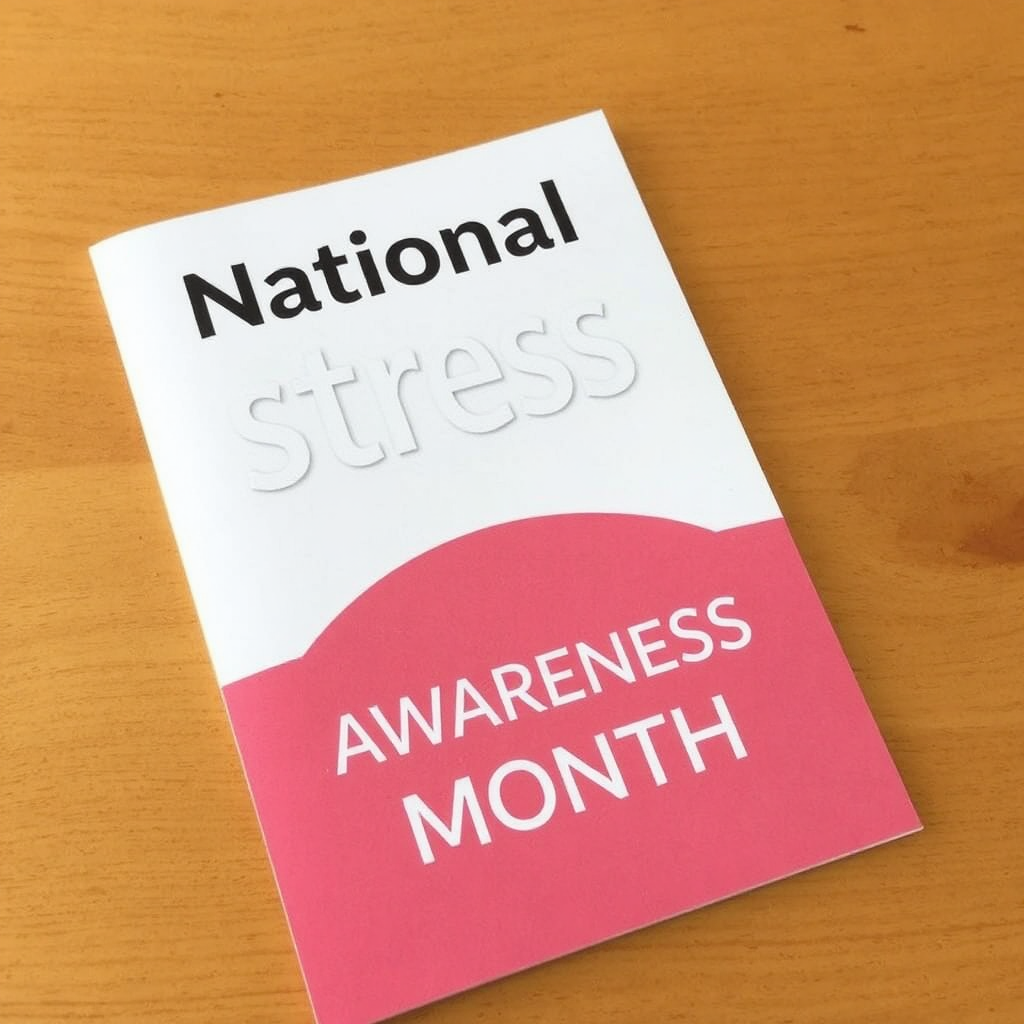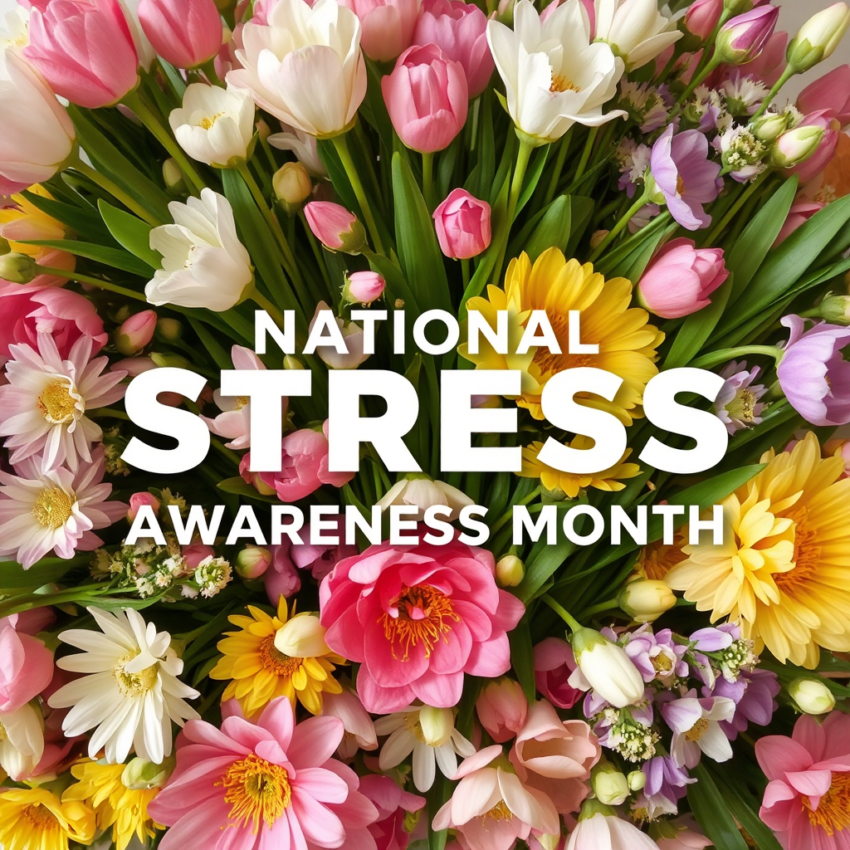Yes, April is upon us. Spring has sprung, and all is well in the world as flowers bloom, trees shed their winter leaves, and birds sing their melodic verses all throughout the day.
But what if your days are not so filled with thoughts of the joy of spring or jaunts around your neighborhood to admire the latest replanted gardens bursting forth with vibrant florals and foliage?
What if stress has you so tightly in its grasp that you feel as though you cannot escape?

April is National Stress Awareness Month. And in recognition of that, I am offering comparisons between humans and the stress they can experience and what blooms and plants in the spring can teach us about handling stress better.
In fact, information from the Malaysian Mental Health Journal explains how flower arrangements and blooms have been shown to enhance mood and reduce stress in humans.
It goes on to explain, “The presence of flowers in indoor environments, such as homes and workplaces, has been linked to increased feelings of contentment and decreased feelings of anxiety.” It continues saying “The practice of flower arranging and gardening has also been identified as a therapeutic activity that can promote emotional well-being.”
What a spectacular discovery.
Here are my findings when comparing the similar effects of stress on humans compared to flowers when dealing with stress.
What Flowers Can Teach Us About Stress

FINDING #1
FLOWERS: Science has shown that speaking kindly to flowers and plants can support their growth. An article by TheSpruce.com explains through research that “talking to your plants really can help them grow faster.” But screaming at them will not. Though plants don’t understand our human language, their growth can be enhanced rather by the vibrations of our voice. Plants react well to low levels of vibration. I discuss more about this in my article. “Talking to Our Houseplants: Madness or Mindfulness?”
HUMANS: Speaking kindly to one another as human beings is also comparable to flowers in regard to how we function from the reaction to being spoken nicely to by someone else. We’re not going to respond favorably to screaming and yelling. And just like flowers, though for varied reasons, we also are supported by a kind voice, a gentle greeting, or a welcomed conversation with a friend.
WHAT THIS TEACHES US: That kindness and gentleness work a lot better than yelling and arguing for any living thing. Whether humans, animals, or plants, there’s a common denominator of peace and tranquility when we keep kindness and softness in our voice.
FINDING #2
FLOWERS: A group called Tompkins and Bird performed research such as playing music, speaking to plants, and producing vibrations to settle their theory once and for all. Though it’s not scientifically been proven that plants have feelings per se, we do know that they do pick up on energies and sense, which is to say, pretty incredible. An article provided by Idaho State University called, “The Wonderful (and Rather Dubious) Connection Between Plants and Music” goes into the studies performed and shows enlightening results from that research.
HUMANS: Have you ever met somebody new, and just felt their energy? Their aura was enlightening, exciting, joyous, and you immediately wanted to be a part of that person’s experience to share in that energy? Well, this is similar to how flowers sense energy without the emotional intelligence part of it.
WHAT THIS TEACHES US: That energy is a real thing that can be felt when communicating and being around others. Even plants can detect the energy in our voices through vibrations. Isn’t energy vibration anyway?
FINDING #3
FLOWERS: Tend to reduce their activity after the sun has long set and darkness creeps in at night. That darkness is used by the plant to metabolize energy and plan for the next day’s successful growth and photosynthesis. Though plants don’t technically sleep as humans do, the lessened amount of activity in the dark, using their circadian rhythms allows them the energy to develop better. They lack a central nervous system, so they don’t experience sleep in the same way people do, but they do technically sleep.
HUMANS: People also mostly sleep after the sun sets and nightfall happens in the evenings. Our brains get to work to heal our bodies as we sleep and restore us for the next day’s activities.
WHAT THIS TEACHES US: We can learn the lesson of getting enough sleep into our busy hectic schedules in order to refresh and renew and allow our bodies to heal from within as we sleep and recuperate.
FINDING #4
FLOWERS: When under stress, scientists have discovered that they put out distinctive sounds, or distress signals. In an article by Li Cohen on cbsnews.com, “Plants Emit a “Rather Noisy” Cry for Help When Under Stress”, explains that plants have their own way of “crying out for help” through airborne ultrasonic sounds. The Science.org website also backs this up with their findings in a piece titled, “Plants Communicate Distress using Their Own Kind of Nervous System”. These writings offer compelling scientific proof through research and studies showing that plants do indeed “cry out” for help when under stress in their own ways.
HUMANS: People can also feel pain, send out distress signals by crying, weeping, and letting others know that they are in crisis or despair. Though we can communicate with others on a much more intelligent and spoken level, I found this comparable in a sense to how flowers also suffer when experiencing their own types of stress.
WHAT THIS TEACHES US: That we are similar to flowers when it comes to stress and shock. We both react in similar ways and respond to stress through like-kind methods.
FINDING #5
FLOWERS: Some research strives to prove that plants do indeed feel a type of sadness when stressed or facing unhealthy environmental conditions. Though not specifically proven just yet, flowers do tend to experience some sort of sadness in their own way when lacking proper hydration, being attacked by a predator, or when not sufficiently nourished by food or light. They don’t possess a central nervous system like humans do, so their sadness can be shown in their own ways.
HUMANS: Like flowers, humans also feel sadness. Of course, we tend to verbalize our feelings more often when something is off kilter with how we’re feeling. We also reach out to others in an attempt to ask for help or communicate to others who need to know about our distressing situations in an effort to lessen the painful emotions we feel and work through the issue at hand.
WHAT THIS TEACHES US: That life comes along with sadness and unhappy emotions. Plants, animals, humans. They all show their grief and reactions to sadness in a variety of ways, but it does seem to be a shared general trait in one form or another across all three species.
FINDING #6
FLOWERS: Plants tend to lose or drop their leaves and petals when stressed.
HUMANS: People often who are stressed lose their hair.
WHAT THIS TEACHES US: The experience of being overly stressed causes our bodies to release parts of ourselves. Whether hair with humans, petals or leaves with flowers and plants – stress causes that damage no matter what the living thing is.
FINDING #7
FLOWERS: Flowers and plants suffer from heat stress. Recovery can last from a few days to a couple of months, depending on how bad the damage was.
HUMANS: People suffer from heat stress, heat exhaustion, and heat stroke. Just like flowers, humans take a little time to recover as well. Hydration, proper diet, and remaining at a determined temperature that’s not too hot or too frigid can keep us at optimal health so we can properly function.
WHAT THIS TEACHES US: Living things cannot tolerate excessive amounts of heat levels to no end, and we all must be cool enough and stay hydrated and fed in order to maintain and sustain our health.

What Is Stress?
The World Health Organization defines stress as “a state of worry or mental tension caused by a difficult situation. Stress is a natural human response that prompts us to address challenges and threats in our lives. Everyone experiences stress to some degree. The way we respond to stress, however, makes a big difference to our overall well-being.”
Did you catch that last part?
…the way we respond to stress.
That makes a difference. Our response to stressful situations. It’s not always easy to pause before we fall down the rabbit hole of anxiety or hop on the victim train in defense.
But it does happen.
We can’t always be mindful every second of our day, but we can try to remember to catch ourselves when we start to fall toward that pit of uselessness and depression. Once we do that, we can pull ourselves out of that un-mindful state and snap ourselves back into feeling better and making better decisions based on our new level of calm.

What Stress Can Do to Us
An intriguing article listing 30 ways stress can affect our bodies from Healthline.com shows we can suffer an array of symptoms from chronic headaches, to becoming sad over time, to a decrease in our immune system and even high blood pressure, weight gain, and a worsening of ulcers, among other things like higher levels of anxiety, stroke, or even heart attacks.
Stress that is not attacked head on with coping skills, setting time aside for self-care, and making days or even weekends when you can take a walk outside, or enjoy nature, or even an afternoon at the beach can all help in the lessening of the effects stress has on our lives.
Good Stress vs. Bad Stress
We all know what bad stress is. The stress that causes harm to us in a multitude of ways. Weight loss, weight gain, distancing ourselves from our social circles, not answering the phone, our anxiety levels rising and causing high blood pressure and depression, sleeping too much, snapping at others, not sleeping enough, restlessness, overeating, starving ourselves, not exercising anymore, not accepting invitations out with friends.
But is there really such a thing as good stress?
It turns out that yes, there is.
Examples of good stress are such things as the stress you feel before walking out on stage to give a presentation in front of a room filled with people, starting a new job, moving to a new area, starting a new business, and other such events.
The Mayo Clinic provides a terrific post called, “Your Body Knows the Difference Between Good Stress and Bad Stress: Do You?” It’s a wonderful overview and explanation of how chronic stress can lead to health issues, numerous symptoms of stress, and signs of being in danger when under large amounts of uncontrolled stress.
Additionally, Suma Health also gives their findings about the same subject on their website in a piece named, “Stress Management: How to Tell the Difference Between Good and Bad Stress.” Again, more interesting insight into the causes and symptoms and management of stress.
Stress Prevention
Preventing bad stress is key to maintaining a calm, in-sync demeanor, and lifestyle. Too much stress can hurt us, even cripple us, if we’re not careful.
Cleveland Clinic offers an information packed article about stress preventing HERE. It explains the meaning of stress, and ways to prevent it from overtaking our lives.
An important advantage of keeping our mental and physical states at some sort of decent level so we can still function seems to lie in maintaining a mindful approach to life on a daily, maybe even hourly basis.
Between raising children, being married, maintaining a household, working full time, managing finances to stay afloat, and juggling all of those things along with all of life’s surprises on any given day when we least expect those, it’s definitely a lot to handle.
April is National Stress Awareness month after all. I want to get that across to everyone reading this post to keep that awareness of what stress (both good and bad) can do to our bodies and mental health and what to look for when bad stress comes into play so we can watch out for those signs and try to be proactive when faced with situations that bring that bad stress on.

Raising Awareness About the Effects of Stress
A crucial point to keep in mind about raising awareness about stress prevention is that we must continue to spread the word and relay how to cope with it. Many people don’t understand the importance of daily stress reduction for helping to make them healthier and happier.
The National Centre for Integrative Health shares a great post regarding raising such awareness. Titled, “Raising Awareness of Stress and Trauma”, the post shares ideas for doing just that.
Resources to Help Cope with Stress
Take a look at my articles “23 Ways to Find Mindfulness in a World of Chaos Without Making Yourself Crazy”, “A Winter Self-Care Toolkit: Mindful Ideas for Inner Warmth and Improved Well-Being”, and “PTSD: Not Just for Those Who Serve” for some great tips and information on stress, stress awareness, and prevention of this silent killer.
The CDC also provides an excellent post about resources for coping with stress. You can see their article about managing stress HERE. In it, you’ll gain additional clarity about stress, what you can do to manage it, and a helpful list of resources for assistance in coping.
Stress Awareness Coming Full Circle
Life throws enough irritating and frustrating situations at us. We don’t need to be overloaded with more things that will cause us to become overwhelmed with additional stress.
Let’s make this National Stress Awareness Month count for ourselves, for those we love and care about, and for those out there who may not have this awareness and may need some outside assistance.
If you know somebody who is overcome with stress in their life, reach out. Give them a call, drop a note on their doorstep, or wave them down when you see them in their front yard picking up the newspaper. It could very well make a tremendous difference in their life and yours as well. You never truly know what that person is going through in their life at that moment.
MY MINDFUL REQUEST
This month, my mindful request is to ask you to extend a little attention to someone you believe is stressed. Offer an ear to listen to their story, lend a hand if they want to get out for a coffee break, or even drop by and gift them with a beautiful floral arrangement. You just never know what your gesture will do for them to help alleviate their suffering from the stress in their life.
